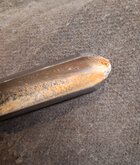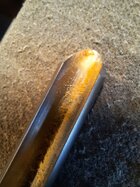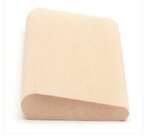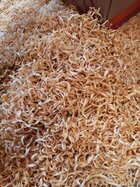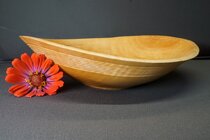Well, howdy, neighbor! And for the record, it's pronounced "Campbeller" unless "you ain't from around here" lol. I call BP "The Forbidden Tree" since it was outlawed. When you have the reddish-orange heartwood without too much of the treacherous pith, it can be stunning, and finishes with even more luster than maple or dogwood. It is truly one of my favorite domestic hardwoods, and I brought home a good ton of it last week in my truck-bed that I hope to turn all of before it cracks to firewood (though it cracks a lot less for me than cherry or worst, dogwood, which I have about given up on as too much trouble). Your shavings look great. I have been taking out trash-bags full of them this weekend, as I turned a very large live-edge one Sunday.
I also plan to try some of the methods listed here for the crud removal (though scrubbing with mineral spirits on steel wool does the job very well-though I need to add that step with the paste wax). One other thing I have been doing with my live edge turns recently is to coat them immediately with shellac inside and out (but not the bark) before putting them in a grocery bag to slow down the drying process and hopefully prevent most cracks. So far it's working well, and not too difficult to sand off for other finishes once dry.
Maybe I'll see you around Upstate turning events. I am in the Carolina Mountain Woodturners club, though it's a bit of a drive, so I only go to a few things every year.
